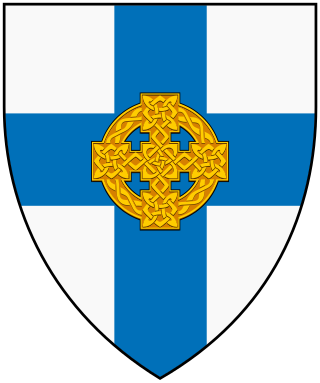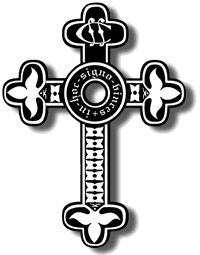
The Anglican Communion is the third largest Christian communion after the Roman Catholic and Eastern Orthodox churches. Founded in 1867 in London, the communion has more than 85 million members within the Church of England and other autocephalous national and regional churches in full communion. The traditional origins of Anglican doctrine are summarised in the Thirty-nine Articles (1571). The archbishop of Canterbury in England acts as a focus of unity, recognised as primus inter pares, but does not exercise authority in Anglican provinces outside of the Church of England. Most, but not all, member churches of the communion are the historic national or regional Anglican churches.
Anglicanism is a Western Christian tradition that has developed from the practices, liturgy, and identity of the Church of England following the English Reformation, in the context of the Protestant Reformation in Europe. It is one of the largest branches of Christianity, with around 110 million adherents worldwide as of 2001.

The archbishop of Canterbury is the senior bishop and a principal leader of the Church of England, the ceremonial head of the worldwide Anglican Communion and the bishop of the Diocese of Canterbury. The current archbishop is Justin Welby, who was enthroned at Canterbury Cathedral on 21 March 2013. Welby is the 105th person to hold the position, as part of a line of succession going back to the "Apostle to the English" Augustine of Canterbury, who was sent to the island by the church in Rome in 597. Welby succeeded Rowan Williams.

The Church of England is the established Christian church in England. It traces its history to the Christian church recorded as existing in the Roman province of Britain by the 3rd century and to the 6th-century Gregorian mission to Kent led by Augustine of Canterbury. Its adherents are called Anglicans.

Anglo-Catholicism comprises beliefs and practices that emphasise the catholic heritage and identity of the various Anglican churches.

The Oxford Movement was a movement of high church members of the Church of England which began in the 1830s and eventually developed into Anglo-Catholicism. The movement, whose original devotees were mostly associated with the University of Oxford, argued for the reinstatement of some older Christian traditions of faith and their inclusion into Anglican liturgy and theology. They thought of Anglicanism as one of three branches of the "one, holy, catholic, and apostolic" Christian church. Many key participants subsequently converted to Roman Catholicism.

The Church in Wales is an Anglican church in Wales, composed of six dioceses.

Ritualism, in the history of Christianity, refers to an emphasis on the rituals and liturgical ceremonies of the Church, specifically the Christian practice of Holy Communion.

The Public Worship Regulation Act 1874 was an Act of Parliament of the United Kingdom, introduced as a Private Member's Bill by Archbishop of Canterbury Archibald Campbell Tait, to limit what he perceived as the growing ritualism of Anglo-Catholicism and the Oxford Movement within the Church of England. The bill was strongly endorsed by Prime Minister Benjamin Disraeli, and vigorously opposed by Liberal party leader William Ewart Gladstone. Queen Victoria strongly supported it. The law was seldom enforced, but at least five clergymen were imprisoned by judges for contempt of court, which greatly embarrassed the Church of England archbishops who had vigorously promoted it.
The General Synod is the tricameral deliberative and legislative organ of the Church of England. The synod was instituted in 1970, replacing the Church Assembly, and is the culmination of a process of rediscovering self-government for the Church of England that had started in the 1850s.

Edward King was a British Anglican bishop and academic. From 1885 to 1910, he served as Bishop of Lincoln in the Church of England. Before his consecration to the episcopate, he was Principal of Cuddesdon College (1863–1873), an Anglo-Catholic theological college, and then Regius Professor of Pastoral Theology at the University of Oxford (1873–1885).

The Reformed Episcopal Church (REC) is an Anglican church of evangelical Episcopalian heritage. It was founded in 1873 in New York City by George David Cummins, a former bishop of the Protestant Episcopal Church.

Arthur Tooth was a ritualist priest in the Church of England and a member of the Society of the Holy Cross. Tooth is best known for being prosecuted in 1876 under the Public Worship Regulation Act 1874 for using proscribed liturgical practices. He was also briefly imprisoned as a result of the prosecution in 1877.

The Anglican ministry is both the leadership and agency of Christian service in the Anglican Communion. "Ministry" commonly refers to the office of ordained clergy: the threefold order of bishops, priests and deacons. More accurately, Anglican ministry includes many laypeople who devote themselves to the ministry of the church, either individually or in lower/assisting offices such as lector, acolyte, sub-deacon, Eucharistic minister, cantor, musicians, parish secretary or assistant, warden, vestry member, etc. Ultimately, all baptized members of the church are considered to partake in the ministry of the Body of Christ.
Charles Fuge Lowder was a priest of the Church of England. He was the founder of the Society of the Holy Cross, a society for Anglo-Catholic priests.

Alexander Heriot Mackonochie was a Church of England mission priest known as "the martyr of St Alban's" on account of his prosecution and forced resignation for ritualist practices.

Richard William Enraght was an Irish-born Church of England priest of the late nineteenth century. He was influenced by the Oxford Movement and was included amongst the priests commonly called "Second Generation" Anglo-Catholics.

The Church of the Province of Myanmar in Asia is a member church of the Anglican Communion. The province comprises the entire country of Myanmar. The current archbishop of Myanmar and bishop of Yangon is Stephen Than Myint Oo.

The 1928 Book of Common Prayer, sometimes known as the Deposited Book, is a liturgical book which was proposed as a revised version of the Church of England's 1662 Book of Common Prayer. Opposing what they saw as an Anglo-Catholic revision that would align the Church of England with the Catholic Church—particularly through expanding the practice of the reserved sacrament—Protestant evangelicals and nonconformists in Parliament put up significant resistance, driving what became known as the Prayer Book Crisis.
A personal ordinariate for former Anglicans, shortened as personal ordinariate or Anglican ordinariate, is an ordinariate, a canonical structure within the Catholic Church established in order to enable "groups of Anglicans" and Methodists to join the Catholic Church while preserving elements of their liturgical and spiritual patrimony.



















